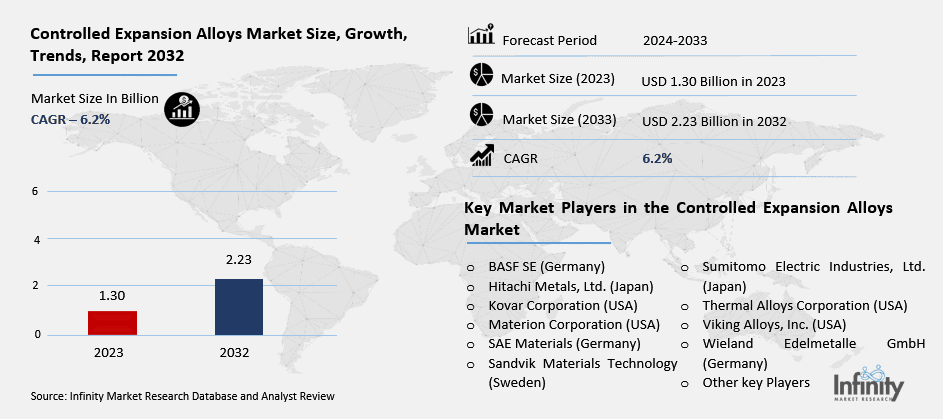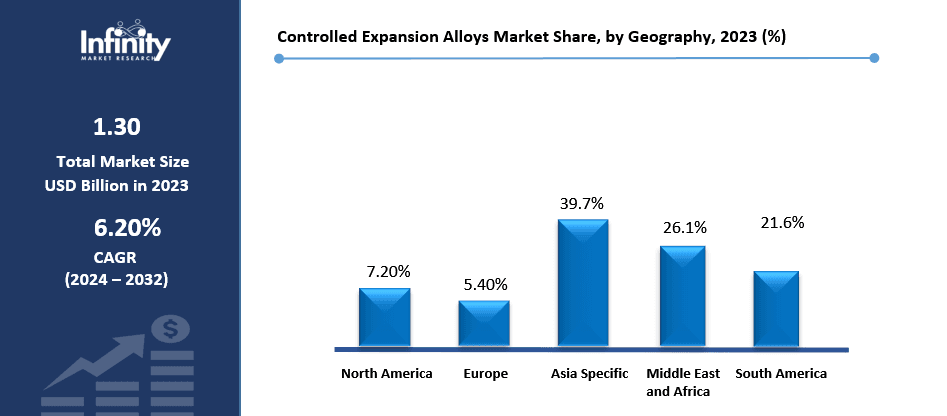
🔐 Secure Payment Guaranteed
Safe checkout with trusted global payment methods.
🌟 Why Choose Infinity Market Research?
At Infinity Market Research, we dont just deliver data — we deliver clarity, confidence, and competitive edge.
In a world driven by insights, we help businesses unlock the infinite potential of informed decisions.
Here why global brands, startups, and decision-makers choose us:
Industry-Centric Expertise
With deep domain knowledge across sectors — from healthcare and technology to manufacturing and consumer goods — our team delivers insights that matter.
Custom Research, Not Cookie-Cutter Reports
Every business is unique, and so are its challenges. Thats why we tailor our research to your specific goals, offering solutions that are actionable, relevant, and reliable.
Data You Can Trust
Our research methodology is rigorous, transparent, and validated at every step. We believe in delivering not just numbers, but numbers that drive real impact.
Client-Centric Approach
Your success is our priority. From first contact to final delivery, our team is responsive, collaborative, and committed to your goals — because you re more than a client; you re a partner.
Recent Reports
Global Myopia Control Lenses Market Report 2025-33
Hyaluronic Acid-based Dermal Fillers Market Report
Controlled Expansion Alloys Market
Controlled Expansion Alloys Market Global Industry Analysis and Forecast (2024-2032) Material Type (Iron-Nickel Alloys, Iron-Nickel-Cobalt Alloys, Other Materials), Application (Electronics & Electrical Components, Aerospace & Defense, Automotive, Telecommunications, Medical Devices, Others), End-Use Industry (Aerospace, Electronics & Semiconductors, Automotive, Energy, Healthcare, Others) and Region
Jan 2025
Chemicals and Materials
Pages: 138
ID: IMR1524
Controlled Expansion Alloys Market Synopsis
Controlled Expansion Alloys Market Size Was Valued at USD 1.30 Billion in 2023, and is Projected to Reach USD 2.23 Billion by 2032, Growing at a CAGR of 6.20 % From 2024-2032.
The Controlled Expansion Alloys market comprises materials that have low CTEs which are more or less constant with changing temperature. Such alloys are meant to either expand or contract steadily and these are specially well welcomed in those conditions where stability of dimensions is paramount. They find Application in industries like electronics, aerospace, automobile related, telecommunication, medical devices etc. where accuracy and performance over a range of temperatures powerfully afford.
The growth of the Controlled Expansion Alloys market is underlined by the increasing need for materials that produced exhibit stable thermal expansion characteristics across industries. Market is divided by material type, application, and end use industry with a growing trend towards electronics aerospace and telecommunication. Asia-Pacific is the largest producer and consumer of electronic goods due to rapid industrialization and technology among the region countries such as China and Japan. North America and Europe species are strategic for research and development and for applications of high added-value to aerospace and electronics.
The element mentioned that with the added usage of controlled expansion alloys in the next-gen electronics, several health care products will help fuel the growth of the market in the future. Reliability under substantially high or low temperatures calls for precise material, which in this case are these alloys. , however, it is also confronted with issues of high production costs and sources of the raw materials that may hamper the take-off in some industries.
Controlled Expansion Alloys Market Outlook, 2023 and 2032: Future Outlook

Controlled Expansion Alloys Market Trend Analysis
Precision in Motion, The Rise of Hybrid Alloys
Another massive aspect of the trend of the Controlled Expansion Alloys market is in the electronics and sectors where there are growing demands for small size miniaturization and high-performance components. These alloys afford the desired thermal stability in highly susceptible electronic products and thus suitable for uses in semiconductors, connectors, and sensors. Moreover, people have begun to move to alloys that have better corrosion properties So, the outcomes demonstrate improved endurance for challenging working conditions, which is very important, especially in aerospace and telecoms industries.
Also, there’s a set of trends when society seeks for compounds with qualities of different materials like Iron-Nickel-Cobalt. These types of hybrid materials are currently being processed to comply with a set of demands within enhanced uses, such as automobiles and health care equipment. These alloys are now receiving research and development attention from the manufacturers to enhance performance rating while keeping the cost as low as possible.
Aerospace and Beyond, Fueling the Demand for Thermal Stability
The Controlled Expansion Alloys Market has been steadily growing due to the growing need for materials that provide high performance in industries such as the aerospace and automotive sectors as well as electronics. For instance, aerospace applications are associated with varying temperatures that expose alloys’ ability to operate at fluctuating temperatures, thus without expanding or contracting. They also find massive application in the context of vehicle manufacturing since continuous fluctuations of temperature are typical for components and they must hold their performance.
In electronics and telecommunications sectors the use of Controlled Expansion Alloys is needed that pushing up the demand for these products as well. As the size of electronic devices keeps reducing, and their power continues to improve, the requirement for appropriate materials for robustness under thermal conditions rises. This trend should grow even stronger as industries keep on advancing and seeking better, more efficient and economical materials.
High Costs, Limited Reach, The Price of Perfection
Another constraint that has been identified in the Controlled Expansion Alloys market is the elevated cost of fabrication of these alloys. The type of alloys that have the desired characteristics of controlled expansion coefficient is generally costly to manufacture, and because smaller industries and companies, normally, do not have the capital to invest in such alloys, they avoid using such alloys in their lines unless they have no choice. This cost factor may hinder the extent to which controlled expansion alloys can penetrate the market in some regions that are in the developmental stage as costs are more sensitive.
Also, the source of raw material in order to manufacture controlled expansion alloys maybe constrained. Cobalt for example is rare and prone to supply chain shocks to the manufacturers of the components. This can cause priciness fluctuations and supply constraints which impacts manufacturing capabilities of the market players in the Controlled Expansion Alloys market.
Future-Proofing Healthcare, Expansion Alloys in Medical Devices
However, the opportunities are significantly explored in the medical device industry where there is a growing concern for precision and reliability of the materials used. These alloys can be applied in the essential medical technologies for example in implants, diagnostic tools, and surgical tools because the dimensional stability is important. One industry which could be riding on this is the medical industry since there is more emphasis on personalized medicine and better technology will create greater demand for these materials.
Furthermore, emphasis on sustainable production processes in the manufacturing industries has potential for manufacturers of controlled expansion alloys. There are growing calls for industries to adopt sustainability as part of production processes and materials, and alloys that exhibit stable expansion in service applications form a suitable material for use in sustainable technologies such as those in renewable energy and components used in electric vehicles. Such a change in the nature towards ‘greener’ products may determine future development of the Controlled Expansion Alloys market.
Controlled Expansion Alloys Market Segment Analysis
Controlled Expansion Alloys Market Segmented on the basis of Material Type, Application and End-Use Industry.
By Type
o Iron-Nickel Alloys
o Iron-Nickel-Cobalt Alloys
o Other Materials
By Application
o Electronics & Electrical Components
o Aerospace & Defense
o Automotive
o Telecommunications
o Medical Devices
o Others
By End Use Industry
o Aerospace
o Electronics & Semiconductors
o Automotive
o Energy
o Healthcare
o Others
By Region
o North America (U.S., Canada, Mexico)
o Eastern Europe (Bulgaria, The Czech Republic, Hungary, Poland, Romania, Rest of Eastern Europe)
o Western Europe (Germany, UK, France, Netherlands, Italy, Russia, Spain, Rest of Western Europe)
o Asia Pacific (China, India, Japan, South Korea, Malaysia, Thailand, Vietnam, The Philippines, Australia, New-Zealand, Rest of APAC)
o Middle East & Africa (Turkey, Bahrain, Kuwait, Saudi Arabia, Qatar, UAE, Israel, South Africa)
o South America (Brazil, Argentina, Rest of SA)
Material Type, Iron-Nickel Alloys segment is expected to dominate the market during the forecast period
The Controlled Expansion Alloys market is primarily segmented into three material types: Iron-Nickel Alloys: Iron-Nickel-Cobalt Alloys: Other Materials. Thermal expansion Iron-Nickel Alloys are quite popular due to material and economic benefits of these alloys. Cobalt bearing Iron Nickel Alloys, which exhibit excellent high heat factor and stability of dimensions, are utilized in more precise applications such as aviation and electronics. Other materials of this category may be Composites or alloys that are special for a specific use or purpose.
Application, Electronics & Electrical Components segment expected to held the largest share
Controlled Expansion Alloys is used across Electronics & Electrical Components, Aerospace & Defense, Automotive, Telecommunications, Medical Devices, and other industries. In electronics these alloys are applied to semiconductor packaging, connectors and sensors because of their stable thermal characteristics. In aerospace and defense industries, they are employed in applications that deem sensitive parts are used under conditions of high temperature. Automotive industries contribute to the value of these alloys for engine parts or other high usage components; telecommunications industries use the alloys for stability of equipment. These alloys prove useful in the medical sector for uses in implants and diagnostic equipment that cannot afford to be off accurate.
Controlled Expansion Alloys Market Regional Insights
Asia Pacific is Expected to Dominate the Market Over the Forecast period
The Asia-Pacific Controlled Expansion Alloys market is the biggest as well as the fastest expanding regional market, attributed to the robust industrial base in a number of APAC nations including China, Japan, and South Korea. These nations are already a great market for high-performance material where stability in thermal expansion is a priority especially in electronic, aerospace and automotive industries. Currently China is the most industrialized nation in this region and has the highest growth in technological sectors hence highest producer and consumer. Japan and South Korea come next in view; they have interest in innovation and electronics and Aerospace industry which supports the call for more of controlled expansion alloys.
Also, the manufacture cost is relatively lower in the region and this is an essential aspect that has made the region to be important for producing alloy. Newer applications relating to high tech such as electric vehicles, renewable energy are and also using controlled expansion alloys which is also leading acceptance. Due to the growing use of precision materials across industries and further research and development, Asia Pacific region will continue to dominate this market slowly increasing its manufacturing capacity.
Controlled Expansion Alloys Market Share, by Geography, 2023 (%)

Active Key Players in the Controlled Expansion Alloys Market
o BASF SE (Germany)
o Hitachi Metals, Ltd. (Japan)
o Kovar Corporation (USA)
o Materion Corporation (USA)
o SAE Materials (Germany)
o Sandvik Materials Technology (Sweden)
o Sumitomo Electric Industries, Ltd. (Japan)
o Thermal Alloys Corporation (USA)
o Viking Alloys, Inc. (USA)
o Wieland Edelmetalle GmbH (Germany)
o Other key Players
Global Controlled Expansion Alloys Market Scope
|
Global Controlled Expansion Alloys Market | |||
|
Base Year: |
2023 |
Forecast Period: |
2024-2032 |
|
Historical Data: |
2017 to 2023 |
Market Size in 2023: |
USD 1.30 Billion |
|
Forecast Period 2024-32 CAGR: |
6.20 % |
Market Size in 2032: |
USD 2.23 Billion |
|
Segments Covered: |
Material Type |
· Iron-Nickel Alloys · Iron-Nickel-Cobalt Alloys · Other Materials | |
|
Application |
· Electronics & Electrical Components · Aerospace & Defense · Automotive · Telecommunications · Medical Devices · Others | ||
|
End-Use Industry |
· Aerospace · Electronics & Semiconductors · Automotive · Energy · Healthcare · Others | ||
|
By Region |
· North America (U.S., Canada, Mexico) · Eastern Europe (Bulgaria, The Czech Republic, Hungary, Poland, Romania, Rest of Eastern Europe) · Western Europe (Germany, UK, France, Netherlands, Italy, Russia, Spain, Rest of Western Europe) · Asia Pacific (China, India, Japan, South Korea, Malaysia, Thailand, Vietnam, The Philippines, Australia, New-Zealand, Rest of APAC) · Middle East & Africa (Turkey, Bahrain, Kuwait, Saudi Arabia, Qatar, UAE, Israel, South Africa) · South America (Brazil, Argentina, Rest of SA) | ||
|
Key Market Drivers: |
· Thermal Innovation, Driving the Need for Controlled Expansion Alloys | ||
|
Key Market Restraints: |
· Raw Material Woes, The Supply Chain Challenge for Expansion Alloys | ||
|
Key Opportunities: |
· Green Technologies and the Alloy Revolution, Sustainable Growth Ahead | ||
|
Companies Covered in the report: |
· Thermal Alloys Corporation (USA), Viking Alloys, Inc. (USA), Materion Corporation (USA), Sandvik Materials Technology (Sweden), SAE Materials (Germany), Kovar Corporation (USA), Sumitomo Electric Industries, Ltd. (Japan), Hitachi Metals, Ltd. (Japan), Wieland Edelmetalle GmbH (Germany), BASF SE (Germany) and Other Major Players. | ||
📘 Frequently Asked Questions
1. What would be the forecast period in the Controlled Expansion Alloys Market research report?
Answer: The forecast period in the Controlled Expansion Alloys Market research report is 2024-2032.
2. Who are the key players in the Controlled Expansion Alloys Market?
Answer: Thermal Alloys Corporation (USA), Viking Alloys, Inc. (USA), Materion Corporation (USA), Sandvik Materials Technology (Sweden), SAE Materials (Germany), Kovar Corporation (USA), Sumitomo Electric Industries, Ltd. (Japan), Hitachi Metals, Ltd. (Japan), Wieland Edelmetalle GmbH (Germany), BASF SE (Germany) and Other Major Players.
3. What are the segments of the Controlled Expansion Alloys Market?
Answer: The Controlled Expansion Alloys Market is segmented into Material Type, Application, End-Use Industry and region. Material Type, the market is categorized into Iron-Nickel Alloys, Iron-Nickel-Cobalt Alloys, Other Materials. Application, the market is categorized into Electronics & Electrical Components, Aerospace & Defense, Automotive, Telecommunications, Medical Devices, Others. End-Use Industry, the market is categorized into Aerospace, Electronics & Semiconductors, Automotive, Energy, Healthcare, Others. By region, it is analyzed across North America (U.S.; Canada; Mexico), Eastern Europe (Bulgaria; The Czech Republic; Hungary; Poland; Romania; Rest of Eastern Europe), Western Europe (Germany; UK; France; Netherlands; Italy; Russia; Spain; Rest of Western Europe), Asia-Pacific (China; India; Japan; Southeast Asia, etc.), South America (Brazil; Argentina, etc.), Middle East & Africa (Saudi Arabia; South Africa, etc.).
4. What is the Controlled Expansion Alloys Market?
Answer: The Controlled Expansion Alloys market comprises materials that have low CTEs which are more or less constant with changing temperature. Such alloys are meant to either expand or contract steadily and these are specially well welcomed in those conditions where stability of dimensions is paramount. They find Application in industries like electronics, aerospace, automobile related, telecommunication, medical devices etc. where accuracy and performance over a range of temperatures powerfully afford.
5. How big is the Controlled Expansion Alloys Market?
Answer: Controlled Expansion Alloys Market Size Was Valued at USD 1.30 Billion in 2023, and is Projected to Reach USD 2.23 Billion by 2032, Growing at a CAGR of 6.20 % From 2024-2032.


🔐 Secure Payment Guaranteed
Safe checkout with trusted global payment methods.
🌟 Why Choose Infinity Market Research?
- Accurate & Verified Data:Our insights are trusted by global brands and Fortune 500 companies.
- Complete Transparency:No hidden fees, locked content, or misleading claims — ever.
- 24/7 Analyst Support:Our expert team is always available to help you make smarter decisions.
- Instant Savings:Enjoy a flat $1000 OFF on every report.
- Fast & Reliable Delivery:Get your report delivered within 5 working days, guaranteed.
- Tailored Insights:Customized research that fits your industry and specific goals.




